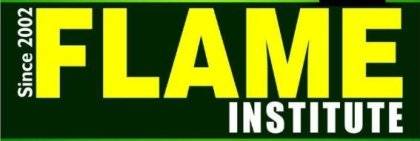@@ SBI PO 2017 REASONING QUIZ@@
@@ SBI PO 2017 REASONING QUIZ@@
Directions (1-5): In the following questions, the symbols $, @, £, • and # are used with the following meanings as illustrated below:
‘A $ B’ means A is neither greater nor smaller than B
‘A @ B’ means A is neither greater than nor equal to B
`A £ B’ means A is neither smaller than nor equal to B
‘A • B’ means A is not smaller than B
‘A # B’ means A is not greater than B
In each of the following questions, assuming the given statements to be true, find out which of the two conclusions I and II given below them is/are definitely true. Give answer
a) if only conclusion I is true.
b) if only conclusion II is true.
c) if either conclusion I or II is true.
d) if neither conclusion I nor II is true.
e) if both conclusions I and II are true.
Q1.Statements: W • P, P £ G, G @ I, I # N
Conclusions: I. I £ P II. N # W
Q2.Statements: U @ D, D $ E, E £ Y, Y • W
Conclusions: I. W @ E II. D £ W
Q3.Statements: Z £ N, N # K, K $ M, M @ R
Conclusions: I. M $ N II. M £ N
Q4.Statements: V • D, D £ T, K $ T, K # F
Conclusions: I. D £ K II. T • F
Q5.Statements: S $ Q, Q @ B, B • K, K # W
Conclusions: I. K # S II. S @ W
Directions (6-10): In the following questions the symbols @, +, ©, $, ∆ and ? are used with the following meaning:
P ∆ Q means P is not equal to Q.
P @ Q means P is greater than Q.
P + Q means P is smaller than Q.
P © Q means P is either greater than or equal to Q.
P $ Q means P is either smaller than or equal to Q.
P ? Q means P is equal to Q.
Now in each of the following questions assuming the given statements to be true, find which of the two conclusions I and ll given below them is/are definitely true. Give answer
a)if only conclusion I is true.
b)if only conclusion II is true.
c)if either conclusion l or ll is true. .
d)if neither conclusion I nor ll is true.
e)if both conclusions I and ll are true.
Q6.Statements:K © M, M ∆ R, R ? T
Conclusions: I. K © T II. M ? T
Q7.Statements: B+D, D@N, N$H
Conclusions: I.H©D II H©N
Q8.Statements: M©K, K@P, P$N
Conclusions: I. M@N II.M?N
Q9. Statements: T$M, M?Q, Q+R
Conclusions: I. Q @ T II.Q ? T
Q10. Statements: D @ B, B$T, T + M
Conclusions: I.M@B II.T©B
Directions (11–15) In the following questions, the symbols @, $, %, # and © are used with the following meanings illustrated—
(i) ‘X @ Y’ means ‘X is not smaller than Y’.
(ii) ‘X $ Y’ means ‘X is not greater than Y’.
(iii) ‘X % Y’ means ‘X is neither smaller than nor equal to Y’.
(iv) ‘X # Y’ means ‘X is neither greater than nor equal to Y’.
(v) ‘X © Y’ means ‘X is neither smaller than nor greater than Y’.
In each of the following questions assuming the given statements to be true, find out which of the two conclusions I and II given below them is/are definitely true. Give answer
(a)If only I is true.
(b)If only II is true.
(c)If either I or II is true
(d)If neither I nor II is true.
(e)If both I and II are true.
Q11.Statements: P $ T, T @ L, U % L
Conclusions: I. P @ LII. U©L
Q12.Statements: A @B, B%D, D©K
Conclusions: I. A©K II. B%K
Q13.Statements: J # K, K©L, P$L
Conclusions: I. P$K II. J#L
Q14.Statements: T % O, T # M, M@ V
Conclusions: I. M % T II. O % V
Q15.Statements: K @ T, T # C, C $ P
Conclusions: I. C © K II. C % K
answers-
S1. Ans.(d)
Sol.Statement-W≥P>G<I≤N
Conclusion– I>P, N≤W
S2. Ans.(e)
Sol.Statement- U<D=E>Y≥W
Conclusion- W<E, D>W
S3. Ans.(c)
Sol.Statement- Z>N≤K=M<R
Conclusion- M=N, M>N
Sol.Statement-W≥P>G<I≤N
Conclusion– I>P, N≤W
S2. Ans.(e)
Sol.Statement- U<D=E>Y≥W
Conclusion- W<E, D>W
S3. Ans.(c)
Sol.Statement- Z>N≤K=M<R
Conclusion- M=N, M>N
S4. Ans.(a)
Sol.Statement- V≥D>T=K≤F
Conclusion- D>K, T≥F
S5. Ans.(d)
Sol.Statement– S=Q<B≥K≤W
Conclusion- K≤S, S<W
S6. Ans.(d)
Sol.Statement-K≥M≠R=T
Conclusion- K≥T, M=T
Sol.Statement-K≥M≠R=T
Conclusion- K≥T, M=T
S7. Ans.(b)
Sol.Statement– B<D>N≤H
Conclusion- H≥D, H≥N
S8. Ans.(d)
Sol.Statement-M≥K>P≤N
Conclusion- M>N, M=N
S9. Ans.(c)
Sol.Statement– T≤M=Q<R
Conclusion– Q>T, Q=T
S10. Ans.(e)
Sol.Statement-D>B≤T<M
Conclusion- M>B, T≥B
S11.Ans.(d)
Sol.Statement-P≤T≥L<U
Conclusion- P≥L, U=L
S12.Ans.(b)
Sol.Statement– A≥B>D=K
Conclusion- A=K, B>K
S13. Ans.(e)
Sol.Statement– J<K=L≥P
Conclusion- P≤K, J<L
S14. Ans.(a)
Sol.Statement– V≤M>T>O
Conclusion-M>T,O>V
S15. Ans.(d)
Sol.Statement- K≥T<C≤P
Conclusion- C=K, C>K
(52)

